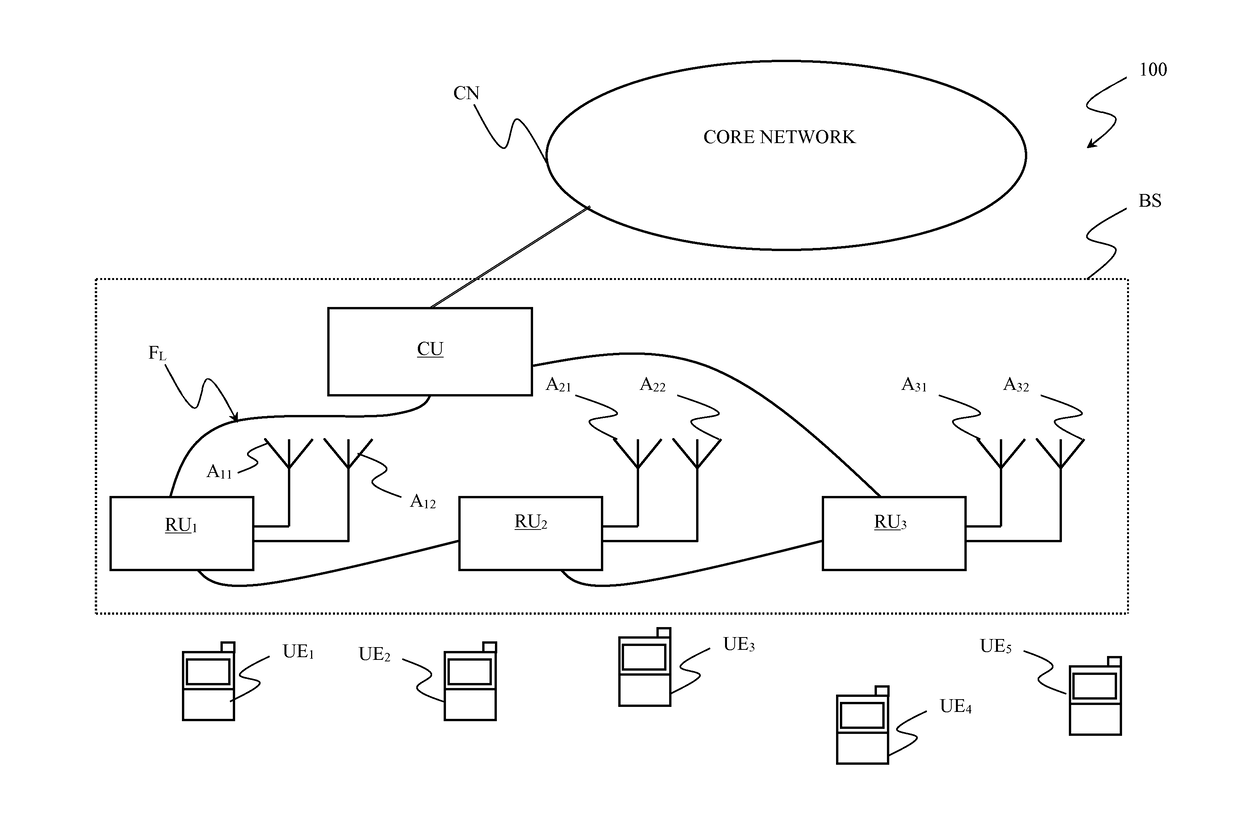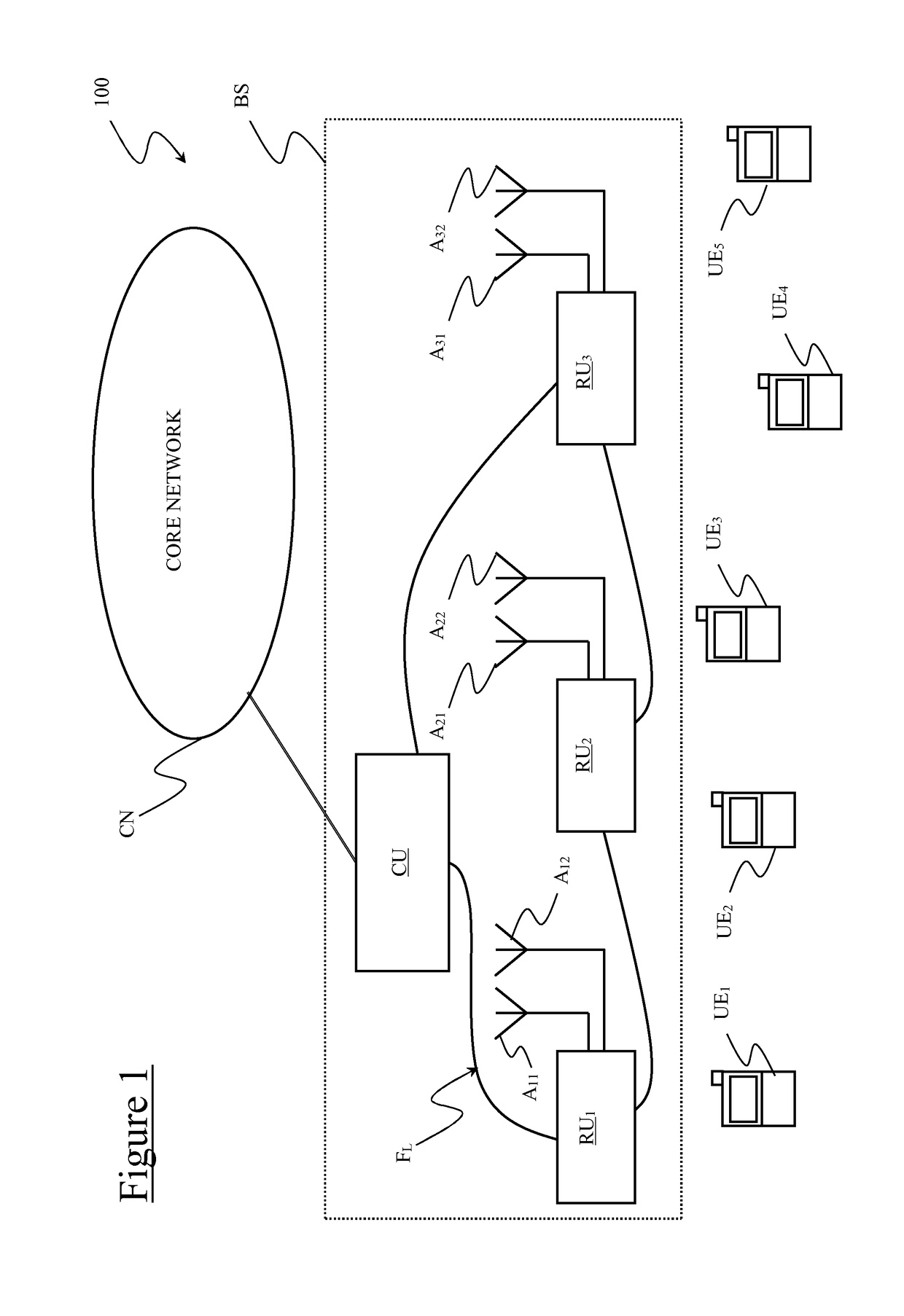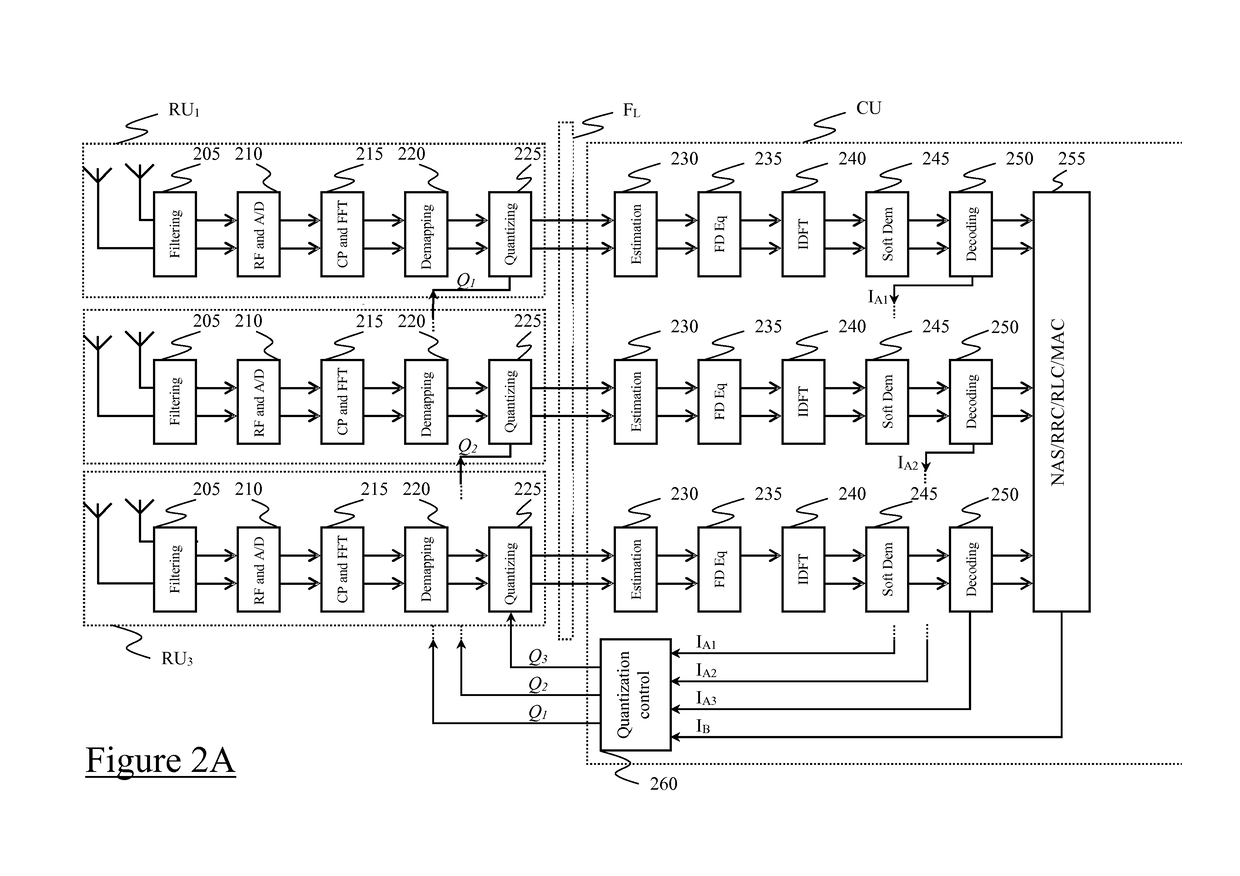Method for reducing fronthaul load in centralized radio access networks (c-ran)
a radio access network and fronthaul load technology, applied in the field of mobile communication networks, can solve the problems of affecting the flexibility of conventional cran systems where signal processing operations are delegated to central units, further burdening the central unit, and not fully satisfying modern technological requirements, so as to reduce the data rate of signals transmitted on fiber links
- Summary
- Abstract
- Description
- Claims
- Application Information
AI Technical Summary
Benefits of technology
Problems solved by technology
Method used
Image
Examples
first embodiment
[0061]Specifically, with reference now to FIG. 2A, schematically showing some relevant modules of central CU and remote RUj (e.g., RU1-RU3) units according to the present invention, channel estimation (module 230), frequency-domain equalization (module 235), “Inverse Discrete Fourier Transformation” (IDFT) precoding (module 240), soft-demodulation (i.e., symbol-to-bit demapping) (module 245), channel decoding (module 250) and higher layer protocols functionalities such as “Non Access Stratum” (NAS), “Radio Resource Control” (RRC), “Radio Link Control” (RLC) and “Medium Access Control” (MAC) layers (module 255) are performed in the central unit CU, whereas filtering (module 205), radio-frequency processing and analog-to-digital conversion (module 210), “Cyclic Prefix” (CP) removal and “Fast Fourier Transformation” (FFT) (module 215), resource element demapping (module 220), and quantization (module 225) are performed in each remote unit RUj—however, embodiments wherein the demapping ...
second embodiment
[0082]In this respect, FIG. 2B schematically shows some relevant modules of central CU′ and remote RU′j (e.g., RU′1-RU′3) units according to the present invention. In this embodiment, filtering (module 205), radio-frequency processing and analog-to-digital conversion (module 210), “Cyclic Prefix” (CP) removal and “Fast Fourier Transformation” (FFT) (module 215), resource element demapping (module 220), channel estimation (module 230), frequency-domain equalization (module 235), “Inverse Discrete Fourier Transformation” (IDFT) precoding (module 240), soft-demodulation (i.e., symbol-to-bit demapping) (module 245) and quantization (module 225) are performed (preferably in this order) in each remote unit RU′j, whereas channel decoding (module 250) and higher layer protocols functionalities such as “Non Access Stratum” (NAS), “Radio Resource Control” (RRC), “Radio Link Control” (RLC) and “Medium Access Control” (MAC) layers (module 255) are still performed in the central unit CU′.
[0083]T...
PUM
 Login to View More
Login to View More Abstract
Description
Claims
Application Information
 Login to View More
Login to View More - R&D
- Intellectual Property
- Life Sciences
- Materials
- Tech Scout
- Unparalleled Data Quality
- Higher Quality Content
- 60% Fewer Hallucinations
Browse by: Latest US Patents, China's latest patents, Technical Efficacy Thesaurus, Application Domain, Technology Topic, Popular Technical Reports.
© 2025 PatSnap. All rights reserved.Legal|Privacy policy|Modern Slavery Act Transparency Statement|Sitemap|About US| Contact US: help@patsnap.com



